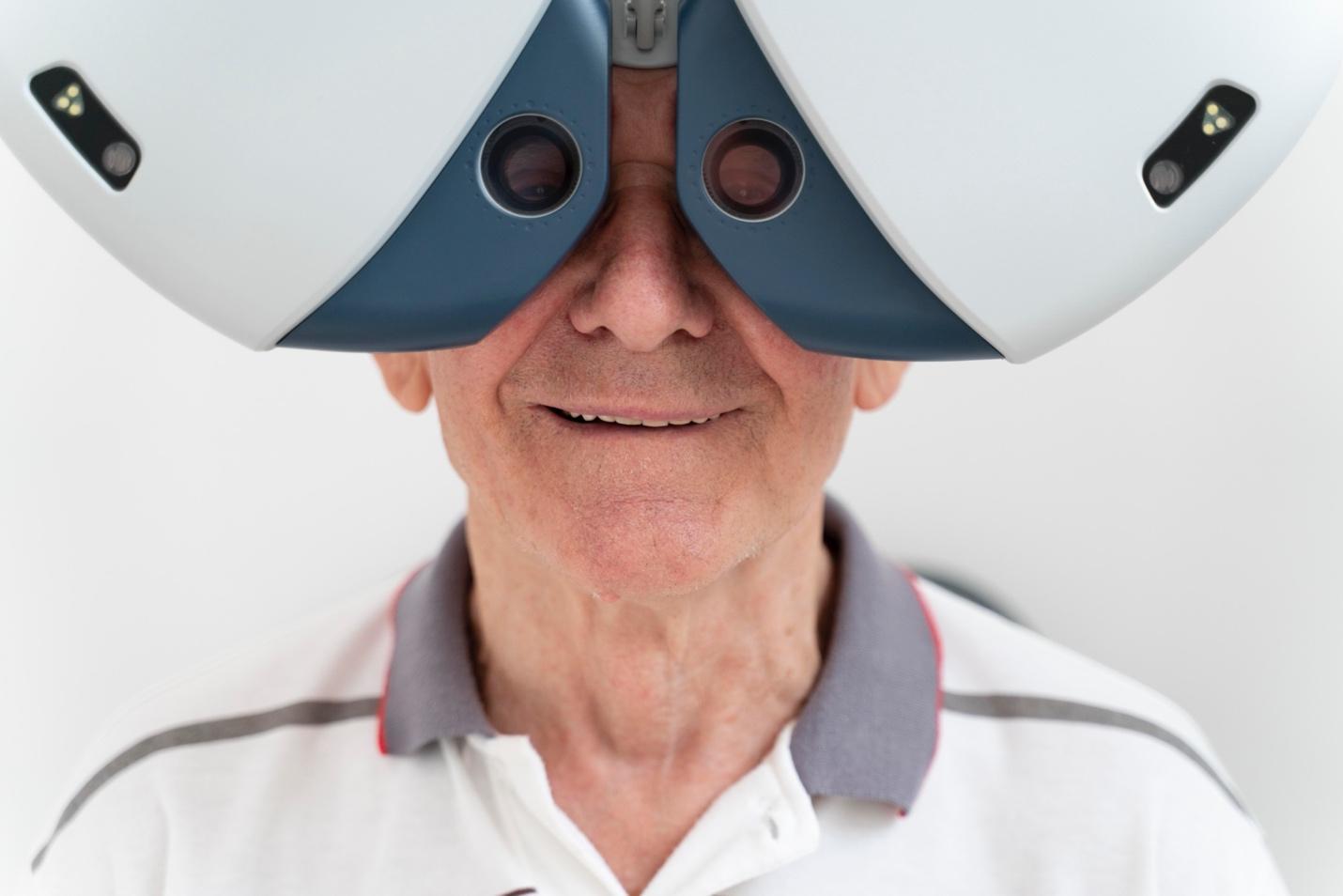Thanks to innovations in eye care, we’re now seeing greater potential for improving patient outcomes and delivering new treatment options. Considering that at least 2.2 billion people suffer from visual impairment globally, with nearly half of these cases deemed as preventable or undertreated, such innovations are growing increasingly crucial. This is especially true for older adults whose vision impairments put them at risk for cognitive decline, depression, social isolation, and mortality.
This in-depth exploration of advancements in ophthalmology offers a glimpse into the promising future where precision and personalized care can redefine vision care for seniors.
Blindness-preventing eyedrops for AMD
Age-related macular degeneration (AMD) is an eye disease that damages the retinal macula. Although AMD can be observed in adults aged 40 to 49, its prevalence dramatically increases to 35% in those over the age of 80 and is the leading cause of visual deterioration and legal blindness.
According to the National Eye Institute, a common treatment used to decelerate vision loss from late-stage AMD is anti-vascular endothelial growth factor (anti-VEGF) injections. However, since its effects only last for a short period, patients must undergo this painful process multiple times. Additionally, studies have shown that ocular pain impacts patient adherence which sometimes leads to hastened vision loss.
Fortunately, researchers from the University of Illinois Chicago have discovered a less invasive breakthrough alternative in the form of eye drops. The small-molecule inhibitor in these eye drops targets a specific protein and has the potential to reverse AMD-related damage. So far, trials reveal that a twice-daily application of the eye drops has been seen to reduce eye damage within 2 to 3 weeks.
Game-changing varifocals for presbyopia
Prior to the introduction and widespread use of varifocal lenses, older adults dealing with presbyopia – an age-related vision issue that makes it difficult to focus on objects up close – relied on bifocal or trifocal lenses. These types of lenses had a visible line, which allowed users to view at near and far distances, but caused discomfort due to a visual jump. Varifocals, on the other hand, were seen as revolutionary. Since they lacked visible lines, users had a smoother experience while still being able to see at various distances.
Today, continuous ophthalmic advances have brought an even more seamless version of varifocals to the market with the use of freeform lens technology. The science behind varifocal lenses offers an enhanced and more tailored experience thanks to a computer-aided design and digital manufacturing process. With modern varifocals, a single pair of glasses lets users see things from a long, intermediate, and near distance, improving convenience and overall quality of life for glasses wearers.
Implantable lens technology for cataracts
Millions of people get cataract surgery each year in a process involving the replacement of the eye’s natural lens with a permanent artificial intraocular lens (IOL). IOLS, the most frequently used one being monofocals, can enhance your vision as well as treat common vision impairments like myopia, astigmatism, and presbyopia, much like glasses or contact lenses can.
With monofocal IOLs, patients achieve distance vision and complement them with the use of glasses or contacts for close vision. This can mean a gap that makes it difficult to engage in activities requiring intermediate vision, such as cooking or working on a computer. To meet this need, pharmaceutical and medical technologies corporation Johnson & Johnson has developed a novel type of IOL. The TECNIS® Synergy™ delivers the widest range of continuous vision without the visual gaps observed in existing monofocal technology by combining the best of extended-depth-of-focus and multifocal technologies.
With new advancements constantly being made in the medical and ophthalmological fields, so too has vision care been made easier for older adults. Less invasive procedures, modern varifocal technologies, and implantable lenses that enhance the overall visual health of cataract patients are only a few examples of these developments. Ultimately, the blend of science and eye care expertise promises a future where seniors can enjoy a healthier life with clear vision.

